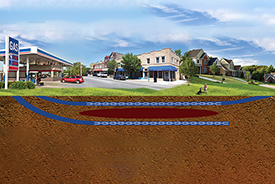

However, in most cases dredging is an effective solution to the problems listed above and many others. Sometimes dredging costs can outweigh the benefits of performing the work, deeming it unfeasible to dredge from a cost-benfit perspective. For example, very dirty water with a red color may contain high turbidity (suspended solids) but may not mean that there is enough sediment. River Sand can help confirm that dredging may be the correct solution for the problem. Discharge parameters are over the permitted limit.The water is very turbid, turning brown or red in color.

The tidal flats will require backfilling with sand material and restoration of a relatively small area of salt marsh. This material will require segregation during dredging. A small portion of this material requires off-site disposal at RCRA D (solid waste) and TSCA approved landfills. Dredged material must be dewatered, solidified with cementitious materials, and placed on-site for future beneficial re-use. Approximately 140,000 cubic yards (cy) of material need to be removed from the tidal flats and an additional 5,000 cy from the drainage channel. Work consists of environmental remediation via mechanical dredging of the tidal flats and an outfall drainage channel adjacent to the Stratford Army Engine Plant to remediate metals and PCBs affected sediments. Sources Sought Announcement for Environmental Remediation Dredging of tidal flats and an outfall drainage channel in the Housatonic River adjacent to the Stratford Army Engine Plant, Stratford, Connecticut:


 0 kommentar(er)
0 kommentar(er)
